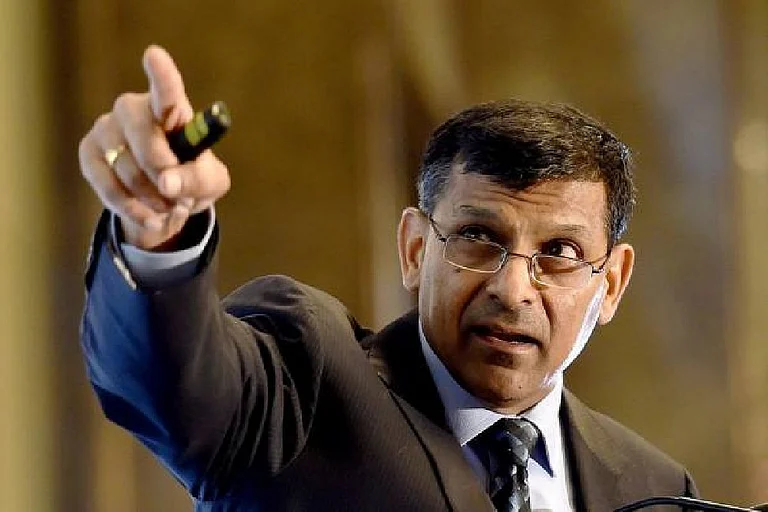Trump’s sweeping tariffs raise US effective rate to 15.8%, with more hikes anticipated ahead.
India faces 50% tariff, among the highest globally, alongside Brazil.
Tariffs drive up US core inflation to 3.1%, with risks of 3.8% by year-end.
Economists warn of job losses, output declines and slower US growth to 1.4%.
Donald Trump’s Revival Pledge for US Economy Faces Reality of Reciprocal Tariffs
US tariffs under Trump’s second term have lifted import costs, strained the labour market, and fuelled inflation, leaving economists questioning their long-term benefit.
US President Donald Trump has kept the world markets on edge with tariff threats since he took over the White House this year for his second and last term. When he declared "Liberation Day" from "unfair trade" on April 2, he unleashed a wave of tariffs which not only stunned America’s trading partners but also sent tremors through the US economy.
Trump invoked emergency powers to slap sweeping import duties on countries from China to India, arguing that it will argued that high tariffs would shrink US trade deficits with its partners and protect American jobs.
While months have been spent on discussing how US trade partners will be impacted because of such punitive tariffs, a question arises: Will it help the US like Trump's big and beautiful promises?
The Wave of Tariffs
The Trump administration wasted no time in erecting new trade barriers, hoping that the same for other nations could be lowered in negotiations. A 10% blanket duty applied to most imports as early as April. A new 25% tariff on foreign automobiles and parts also took effect in the same month. Imported steel and aluminium duties were doubled to 50% in June.
Virtually everything Americans import was suddenly more expensive. “Our updated estimate of the average effective U.S. tariff rate stands at 15.8%—a significant increase from the 2.3% rate at the end of 2024, but roughly six percentage points lower than the 22% recorded on Liberation Day,” said Nora Szentivanyi, senior global economist at J.P. Morgan.
“Based on our expectation that sectoral tariffs will be imposed later this year, we still anticipate that the US effective tariff rate will approach 18–20%, while the observed tariff rate (based on actual customs duties) is likely to level off slightly higher than 15%,” she added.
A few of the US's partners struck a deal to soften the tariff blow, but not all were equally fortunate. For example, India was one of the first countries to engage with the US for a bilateral trade agreement (BTA). Yet, it faced a steep tariff rate of 50%, an initial 25% levy effective from August 7 plus an additional 25% set to kick in by the end of August. It is the highest rate imposed so far (alongside Brazil) on any country, putting it at a severe disadvantage compared to countries with lower duties like Vietnam, Indonesia and Bangladesh.
The tariff saga does not end here. Uncertainty still surrounds currently exempt sectors, notably pharmaceuticals and electronics. The Trump administration has signalled that tariffs on pharmaceuticals could potentially rise toward 200% by mid- to late-2026.
In addition, regulatory risks remain. “An eventual court ruling against the administration’s reliance on the International Emergency Economic Powers Act (IEEPA) as the basis for these tariffs could significantly alter the implementation path. If the IEEPA is deemed inadmissible, the legal status of the trade deals themselves could come into question,” Szentivanyi noted.
Are Tariffs Helping Americans?
Even as Trump claimed to impose tariffs in the interest of the US, the immediate consequence of his tariffs has been higher prices on everyday goods. Its inflation data released on Tuesday showed that prices were rising at the fastest pace since February, even as July inflation held steady.
Consumer prices rose 2.7% in July, the same as in June, driven by lower energy costs, which offset price rises for items such as coffee, tomatoes and tools. However, core inflation, which strips out food and energy costs, rose by 3.1% which is the fastest pace in six months. Economists say this is no coincidence–the tariffs are “bleeding through” into costs for furniture, electronics, toys and other imported items Americans buy regularly.
“We expect [core inflation] will rise further to a peak of 3.8% by the end of the year as tariffs bleed through more fully to consumer prices,” Michael Pearce, deputy chief US economist at Oxford Economics, told Politico. Meanwhile, the US Federal Reserve wants inflation to remain at 2%.
Trump insisted that foreign exporters will "eat" the tariff costs. Initially, many US importers and retailers tried to absorb some costs or negotiate discounts from suppliers. But that cushion is fading. Goldman Sachs economists estimate that, as of June, consumers bore only 22% of tariff costs, with businesses absorbing nearly two-thirds of the levies. However, they expect the consumer share to surge to 67% by October — based on historical patterns of how import duties influence prices—with domestic producers also anticipated to raise prices.
Contrary to Trump’s claims, tariffs have impacted the labour market more severely than economists expected. Data released earlier this month sharply revised down job figures that had initially indicated robust employment growth. The government had previously reported a gain of 291,000 jobs in May and June, but the revised data showed an increase of just 33,000.
The Peterson Institute for International Economics (PIIE) has found that retaliation by countries would magnify the economic losses and inflation increases in both the US and the retaliating countries. "Contrary to the claim that the tariff policy will spur an industrial revival in the US, the tariffs disproportionately hurt the US agriculture and durable manufacturing sectors in terms of output losses, lower employment and price increases," the PIIE noted.

American soybean and almond exporters are anxious that trading partners might retaliate or source their supplies elsewhere. On the other hand, the US automakers and machinery producers must contend with pricier steel, aluminium and electronics.
"Inflation risks remain skewed to the upside, in our view. Signs of tariff-related price pressures persist in goods inflation, which we expect will intensify when automakers transition to a new model year and set new prices in the coming months," said David Seif, chief economist for developed markets at Nomura.
However, Trump dismissed economists’ forecasts of higher inflation, while the White House hailed the latest CPI report as evidence that his programme is delivering results.
On the broader US economy, analysts have slashed US growth projections for 2025 to roughly 1.4%, about half the 2.8% growth America enjoyed in 2024.
A Silver Lining Abroad
While the tariffs may be hurting the US economy, they have spurred other nations to rethink their trade strategies. India responded sharply to the US's criticism over its energy ties with Russia. Brazil—also facing a 50% tariff—is in talks with India over joint retaliation or alternative arrangements.
As long as uncertainty hangs over US policy, partners are likely to hedge their bets and deepen ties elsewhere.

